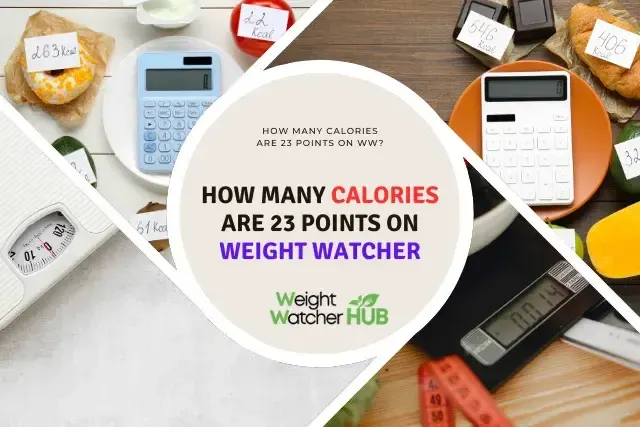Weight Watchers (WW) is a renowned weight loss program known for its innovative points system. If you’re wondering, "How many calories are 23 points on WW?", you’re not alone. This question is common among Weight Watchers participants eager to balance their points with calorie intake.
In this article, we’ll break down the points-to-calories concept, explore how WW calculates points, and provide practical tips for effective weight management.
 |
| An illustrative image of the article |
Understanding the Relationship Between WW Points and Calories
The WW points system assigns a specific point value to foods based on their nutritional profile, including calories, protein, saturated fat, and sugar content. While there’s no direct calorie-to-points formula, a general estimate is that 1 WW point equals approximately 35-50 calories, depending on the food composition. Based on this, 23 WW points might equate to roughly 800 to 1,200 calories.
However, it’s important to remember that WW points emphasize the quality of calories rather than just the quantity. For instance, foods high in protein and low in added sugars often have fewer points compared to calorie-dense foods with little nutritional value.
Why Doesn’t WW Focus Solely on Calories?
Unlike traditional calorie counting, WW’s approach encourages balanced eating by rewarding nutrient-dense foods. This system helps participants make healthier choices without obsessing over calorie numbers, promoting long-term sustainable weight loss.
Factors Affecting WW Point Values
WW points are calculated using an algorithm that evaluates:
- Calories: Higher-calorie foods typically have more points.
- Protein: Foods rich in protein often have fewer points as they support satiety and muscle maintenance.
- Saturated Fat: Foods high in saturated fat receive more points to encourage healthier fat choices.
- Sugar: High-sugar foods have more points due to their lower nutritional value.
For detailed point calculations, try the Weight Watchers Points Calculator available on our website. It’s a free tool that simplifies point tracking for your favorite meals and snacks.
How to Convert WW Points to Daily Calorie Intake
To estimate your daily calorie intake from WW points:
- Multiply your daily points target by 35-50 calories per point.
- Adjust the range based on your activity level, metabolism, and goals.
- Consider incorporating WW’s Weight Tracker tool to monitor progress and make informed adjustments.
For instance, if your daily target is 23 points, your estimated calorie range would be 805 to 1,150 calories, emphasizing nutrient-rich, low-point foods.
Are Zero-Point Foods Really Calorie-Free?
Zero-point foods, a hallmark of the WW program, are not calorie-free. Instead, they are low-calorie, nutrient-dense items such as fruits, vegetables, lean proteins, and legumes. These foods encourage healthy eating patterns without exhausting your daily points allowance. You can explore a full list of zero-point foods in our Healthy Recipes section.
Using the WW App for Effective Point Management
The WW app is a powerful tool for tracking points, monitoring progress, and staying motivated. Here’s how you can optimize this approach for the best results:
- Track meals: Log your daily food intake for accurate point tracking.
- Scan barcodes: Quickly identify point values for packaged foods.
- Plan meals: Use the app’s recipe database to prepare low-point, delicious meals.
Discover more tips for managing your WW points effectively by exploring our Weight Progress Tracker.
Weight Watchers: Balancing Points and Nutrition
WW promotes a balanced eating philosophy, prioritizing foods that support overall health. With emphasizing points rather than strict calorie counting, this program encourages participants to make informed, mindful decisions about their food choices, offering flexibility without the constraints of traditional calorie tracking.This approach fosters a positive relationship with food and helps achieve sustainable weight loss results.
Related Article
If you’re interested in exploring how WW compares to other programs, check out our article: What is the Highest-Rated Weight Loss Program? It provides insights into choosing the best program for your weight loss journey.
Conclusion
Understanding the relationship between WW points and calories can help you make informed decisions on your weight loss journey. Remember, Weight Watchers is designed to simplify healthy eating, emphasizing quality over quantity. Whether you’re using the WW app or exploring our free tools, you have everything you need to succeed. Ready to take the next step? Visit our Weight Watcher Questions and Answers section for more tips and insights!